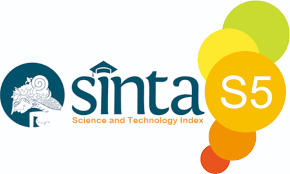Strengthening of Character Values in The Merdeka Belajar Era by Short Film Jagat Raya 2 (2023)
DOI:
https://doi.org/10.22460/jler.v6i2.17415Keywords:
Character Values, Short Films, Merdeka BelajarAbstract
This study was inspired by the declining use of character education principles, particularly among adolescents, which has a negative impact on the standard of instruction in the post-Merdeka Belajar (freedom to learn) era. In this study, Jagat Raya 2 (2023), a short film produced by the Ministry of Education and Culture, Research and Technology of the Republic of Indonesia, which is used as an alternative educational system, is used to illustrate the significance of character values in the Merdeka Belajar era. Researchers employ a type of qualitative methodology. The methods of data research employed include documentation, analysis, and literature review methods. According to the study's findings, the short video Jagat Raya 2, which was produced by the Ministry of Education and Culture in 2023, contains seven different types of character values, including honesty, responsibility, intelligence, keeping one's surroundings neat and tidy, caring, creativity, and cooperation. In the Merdeka Belajar era, character development through short films gives students the opportunity to decide how they feel about their own decisions, while teachers can differentiate instruction and create stimuli that will encourage students to develop their human capital.
References
Bahar, H., & Herli, Sundi, V. (2020). Merdeka Belajar to Bring Education Back to Its Fundamentals (Merdeka Belajar Untuk Kembalikan Pendidikan Pada Khittahnya). PROSIDING SAMASTA Seminar Nasional Bahasa dan Sastra Indonesia, 115–122. Haq, D. S. (2019). Learning to write short story texts, short film media include moral education for class XI students (Media Film Pendek Bermuatan Pendidikan Moral Untuk Pembelajaran Mengonstruksi Teks Cerita Pendek Pada Peserta Didik Kelas XI). https://lib.unnes.ac.id/33742/ Izza, A. Z., Falah, M., & Susilawati, S. (2020). Problems in achieving educational objectives in the era of Merdeka Belajar are examined in the literature (Studi literatur: problematika evaluasi pembelajaran dalam mencapai tujuan pendidikan di era merdeka belajar). Konferensi Ilmiah Pendidikan Universitas Pekalongan 2020, 10–15. https://proceeding.unikal.ac.id/index.php/kip Jerry, H. (2022). Uses of Characters in the Narrative Film Jagat Raya to Communicate Educational Messages (2020) (Fungsi Karakter untuk Menyampaikan Pesan Pendidikan Dalam Naratif Film Jagat Raya (2020)). IMAJI: Film, Fotografi, Televisi, & Media Baru, 13(1), 1–9. https://imaji.ikj.ac.id/index.php/IMAJI/article/view/71 Karkono, K. (2009). The Meaning of Verses of Love in Novels and Films Differs: An Ecranization Study in atavism (Perbedaan Makna Novel dan Film Ayat-Ayat Cinta: Kajian Ekranisasi. Dalam Atavisme) (Vol. 12, Number 2, p 167–180). https://doi.org/10.24257/atavisme.v12i2.168.167-180 Kemdikbud. (2019). Concepts and Recommendations for Improving Character Education at the Elementary and Junior School Level (Konsep dan Pedoman Penguatan Pendidikan Karakter Tingkat Sekolah Dasar dan Sekolah Menengah Pertama). Kementerian Pendidikan dan Kebudayaan Republik Indonesia, 8. https://cerdasberkarakter.kemdikbud.go.id/?wpdmpro=buku-konsep-dan-pedoman-ppk Manullang, B. (2013). Gold Generation Grand Design of 2045 Character Education (Grand Desain Pendidikan Karakter Generasi Emas 2045). Jurnal Pendidikan Karakter, 4(1), 1–14. https://doi.org/10.21831/jpk.v0i1.1283 Mustika, I. (2013). Language politeness tradition: fostering the development of character in future generations (Mentradisikan Kesantunan Berbahasa: Upaya Membentuk Generasi Bangsa yang Berkarakter). Semantik, 1, 1–11. Nugrahani, F., Widayati, M., & A.M, A. I. (2019). Character Education Model Development Through the School Literacy Movement Based on Film (Pengembangan Model Pendidikan Karakter Melalui Gerakan Literasi Sekolah Berbasis Film). Belajar Bahasa, 4(1), 28. https://doi.org/10.32528/bb.v4i1.1865 Samani, M., & Hariyanto. (2013). Concepts and Examples of Character Education (Konsep dan Model Pendidikan Karakter (3 ed.)) PT Remaja Rosdakarya. http://library.fip.uny.ac.id/opac/index.php?p=show_detail&id=6830 Sofyansyah, A. (2023). Jagat Raya 2. Kemendibudristek RI. https://www.youtube.com/watch?v=y2YoB8As6xg&t=10s Sudrajat, A. (2014). The Betawi Ethnic Mutual Cooperation Culture as a Source of Social Studies Education (Nilai-Nilai Budaya Gotong Royong Etnik Betawi Sebagai Sumber Pembelajaran IPS) [Doctoral Dissertation, Universitas Pendidikan Indonesia]. Sugiono. (2022). Quantitative, qualitative, and R&D research techniques (Metode Penelitian Kualitatif, Kuantitatif, dan R&D (4 ed.)). Alfabeta. Uricchio, W. (2014). Film, cinema, television, media? New Review of Film and Television Studies, 12(3), 266–279. https://doi.org/10.1080/17400309.2014.926656 Wina, S. (2011). The educational process's standard-oriented learning technique (Strategi pembelajaran berorientasi standar proses pendidikan). Kencana.






